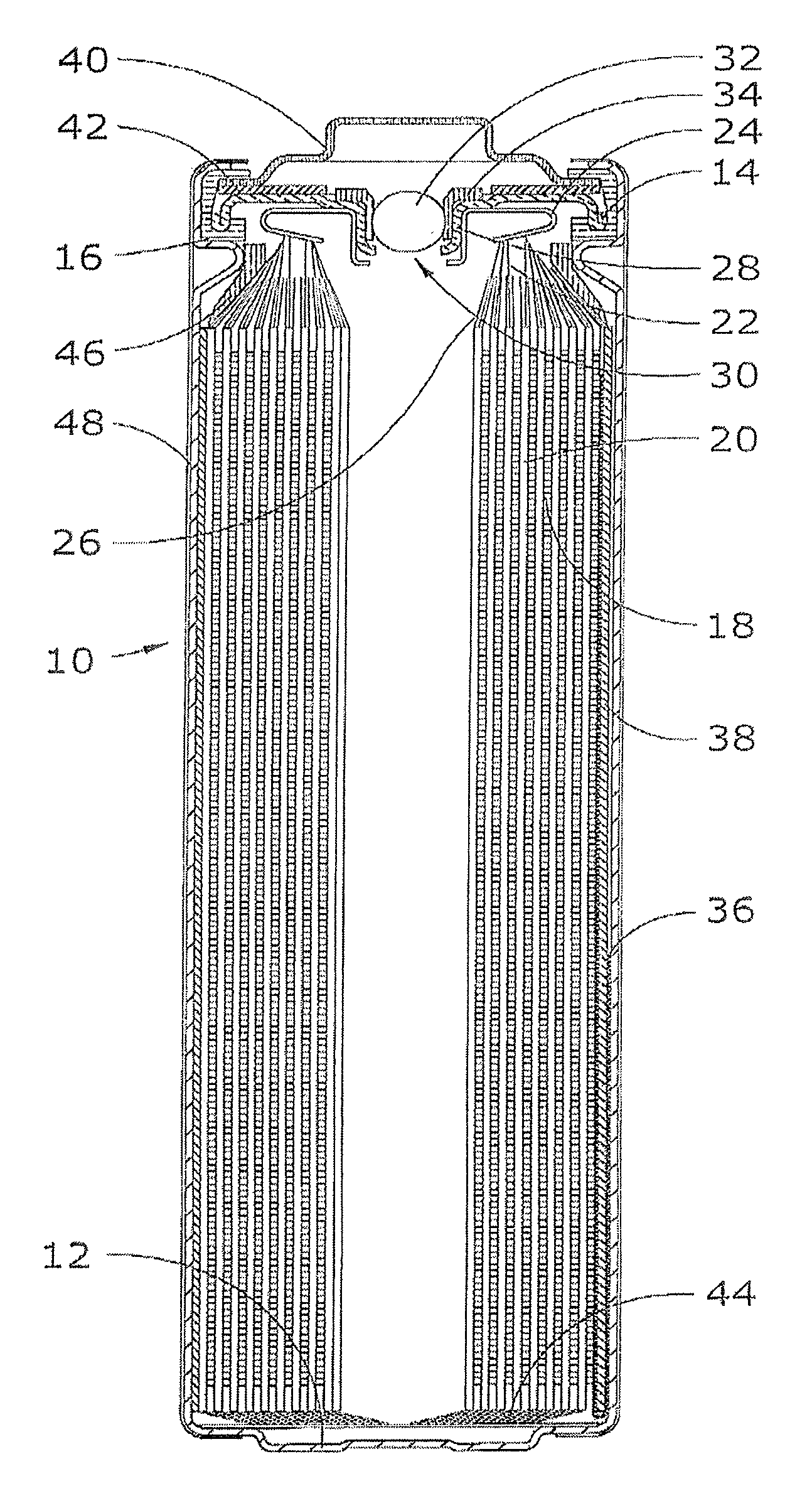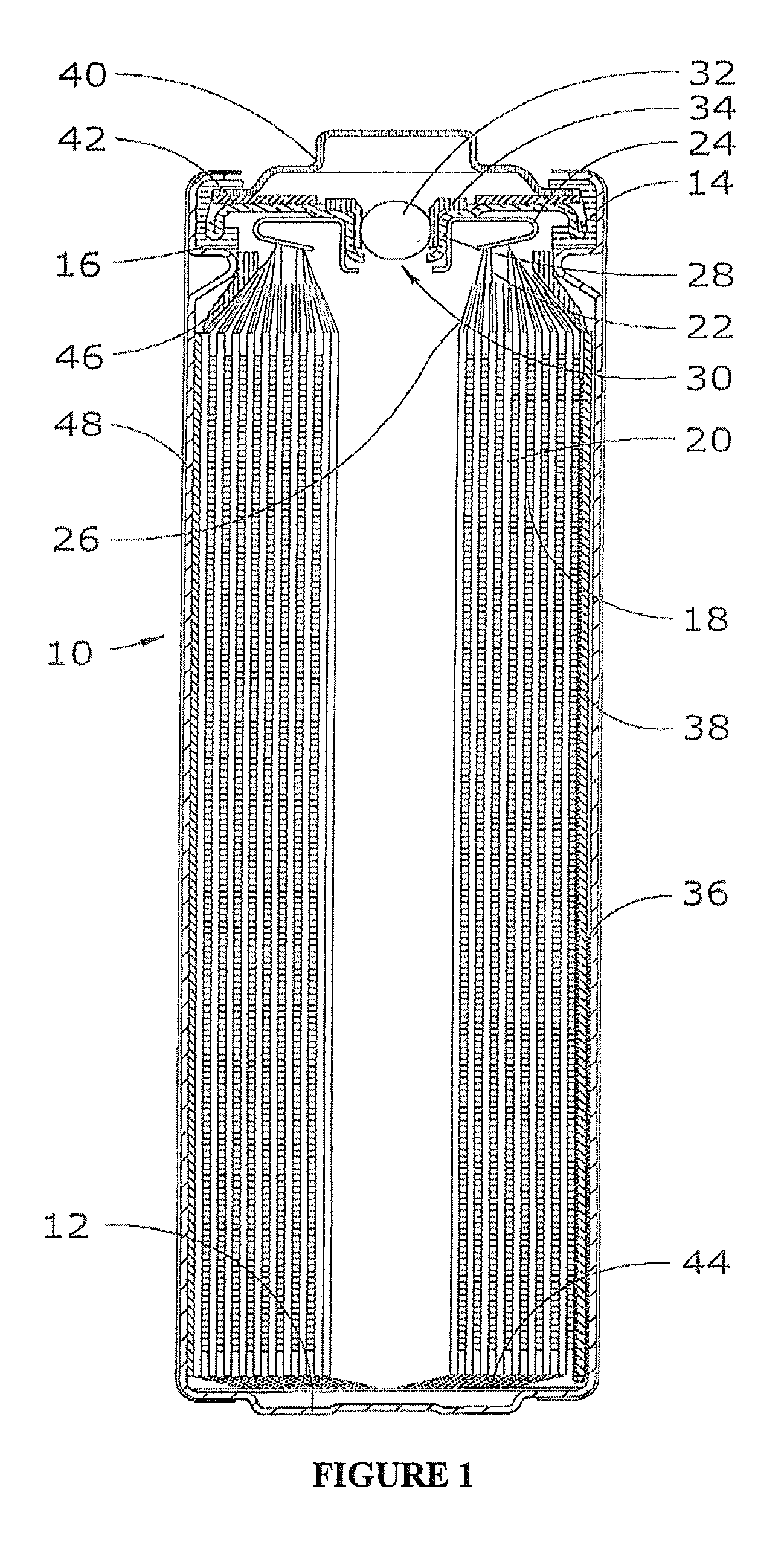Lithium-Iron Disulfide Cell Design
a technology of lithium iron disulfide and cell, applied in the field of primary electrochemical cells, can solve the problems that the battery may cease to deliver capacity regardless, and achieve the effects of easy control, simple reduction of this contribution, and difficult prediction and control
- Summary
- Abstract
- Description
- Claims
- Application Information
AI Technical Summary
Benefits of technology
Problems solved by technology
Method used
Image
Examples
example
[0089]A series of FR6 cells were constructed as shown in Tables 1a and 1b below. For Lots 1-8, an identical cell housing, electrolyte solution and separator thickness were used, such that only the thickness of the lithium, solids packing and loading of the cathode and separator manufacturer were appreciably altered. Lots 1 and 3 represent comparative examples created by the inventor (i.e., these cells do not represent prior art examples), while lot 2 represents the best performing, prior art FR6 cell known to the inventor (also referenced above). Lots 4, 5, 6, 7 and 8 are various embodiments of the invention. In this manner, direct comparisons can be made regarding the effects of anode thickness and cathode formulation for Lots 1-8.
[0090]Additional comparative examples are shown, Lots A, B and C. Lots A-C are other FR6 cells from the prior art. While many of the components, including the cell housing materials and anodes, for Lots A-C are believed to be substantially similar to thos...
PUM
| Property | Measurement | Unit |
|---|---|---|
| diameter | aaaaa | aaaaa |
| height | aaaaa | aaaaa |
| thickness | aaaaa | aaaaa |
Abstract
Description
Claims
Application Information
 Login to View More
Login to View More - R&D
- Intellectual Property
- Life Sciences
- Materials
- Tech Scout
- Unparalleled Data Quality
- Higher Quality Content
- 60% Fewer Hallucinations
Browse by: Latest US Patents, China's latest patents, Technical Efficacy Thesaurus, Application Domain, Technology Topic, Popular Technical Reports.
© 2025 PatSnap. All rights reserved.Legal|Privacy policy|Modern Slavery Act Transparency Statement|Sitemap|About US| Contact US: help@patsnap.com



